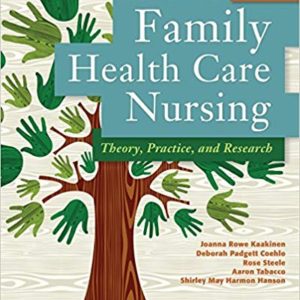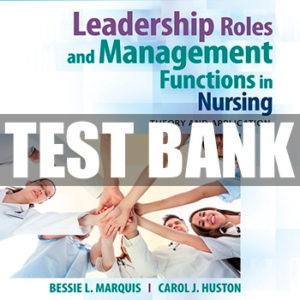Test Bank for Introductory Economics and Introductory Macroeconomics and Introductory Microeconomics by John G
$35
Description
Test Bank for Introductory Economics and Introductory Macroeconomics and Introductory Microeconomics by John G Marcis and Michael Veseth
Table of content
Macroeconomic Problems
Supply and Demand
The Problem of Unemployment
Understanding Inflation
Measuring Economic Activity
Aggregate Demand
Aggregate Supply and the Economy
Fiscal Policy
Money and Banking
Money, Credit, and the Economy
Monetary versus Fiscal Policy
The Monetarists
International Trade
The Foreign Exchange Market
International Economics
Problems, Goals, and Trade-Offs
Scarcity arid Choice
Specialization
Demand and Supply: The Micro Side
Markets at Work
Consumer Choice
Production and Cost
Producer Choice: Monopoly
Producers in Competitive Markets
Imperfect Competition
Labor Markets
Capital and Natural Resource Markets
Energy Markets
Free Market Choice
Market Failures: Externalities
Market Failures: Monopolies
Scarcity and Choice: The Poverty Problem
1. According to Veseth, which of the following
situations is the most likely topic of discussion in
a class on “macroeconomics”? (6)
a. An increase in the price of hamburgers.
B. An increase in the unemployment rate.
c. An increase in the production of a particular
company.
d. An increase in the number of producers of
a product.
e. An increase in the wage rate paid construction
workers.
2. According to Veseth, which of the following
situations is the most likely topic of discussion in
a class on “microeconomics”? (6)
a. An increase in governmental taxes.
b. An increase in governmental spending.
c. An increase in the unemployment rate.
D. An increase in the price of a resource used
to produce a particular product.
e. An increase in the rate of inflation.
3. According to Veseth, in which of the following
decades has unemployment been considered the
most serious problem? (8, 9)
a. The 1950s.
B. The 1930s.
c. The 1960s.
d. The 1940s.
e. The 1970s.
4. According to Veseth, during which of the following
decades has inflation been considered the
most serious economic problem? (14-15)
a. The 1930s.
b. The 1940s.
c. The 1950s.
d. The 1960s.
E. The 1970s.
5. If real gross national product is used as a
measure of economic growth, during which of
the following decades was economic growth in
the United States the greatest? (12-13)
a. The 1930s.
b. The 1940s.
c. The 1950s.
D. The 1960s.
e. The 1970s.
6. During the decade of the 1960s, economists
observed the “Phillips curve phenomenon” in
the United States. Which of the following statements,
if any, best describes the Phillips curve
relationship? (13-14)
a. Unemployment can only be reduced by
reducing inflation.
b. Employment increases as unemployment
falls.
c. Any policy that increases inflation also
increases unemployment.
d. As unemployment increases, there is no
change in the rate of inflation.
E. None of the other responses is correct.
7. One explanation of the Phillips curve which has
been proposed is that of the “wage-lag” theory.
This theory maintains that inflation can temporarily
reduce unemployment because inflation
tends to: (13, 14)
a. increase the supply of labor.
B. increase business profits.
c. cause productivity to lag behind wages.
d. increase the purchasing power of the dollar
in foreign markets.
e. increase the purchase of agricultural products
where more workers are needed.
1
2 CHAPTER 1
8. According to Veseth, a major contributor to the
stagnation era of 1974-1975 was: (15-16)
a. the large increases in the exportation of
wheat to the Soviet Union.
b. the leftward movement of the Phillips
curve.
c. the manner in which the government “redefined”
who was employed and who was
unemployed.
D. the embargo on oil shipments imposed by
the Organization of Petroleum Exporting
Countries (OPEC).
e. the manner in which the government “redefined”
how the rate of inflation was
calculated.
9. There have been a number of theoretical attempts
to explain the disappearance of the
Phillips curve during the 1970s. Which of the
following statements, if any, would not explain
the disappearance of the Phillips curve? (16-17)
A. Inflation is now more of a “demand-pull”
phenomenon than a “cost-push”phenomenon.
b. Expectations concerning the occurrence of
inflation have changed.
c. Inflation today is heavily influenced by
rising oil prices.
d. Consumers have become more sophisticated
in the manner in which they anticipate
inflation.
e. The increases in demand which led to
higher prices would, through the wage-lag
mechanism, cause employment to rise also.
10. Suppose that the Phillips curve works in the
manner which is described in the text. If this
relationship holds, an increase in the rate of
inflation will result in: (13-14)
a. an increase in the unemployment rate
b. an increase in the economic discomfort
index.
c. a decrease in the economic discomfort
index.
d. a decrease in the employment rate.
E. none of the other responses is correct.
11. Economics is the social science which examines
how society attempts to: (5)
a. fight inflation and unemployment while
achieving economic growth.
b. organize business and earn profits for
firms subject to governmental control.
C. produce and distribute goods and services
in a world of scarce resources.
d. allocate resources among the government,
industrial and international sectors of the
economy.
e. balance the budget and fight inflation
without sacrificing any
You must be logged in to post a review.




Reviews
There are no reviews yet.